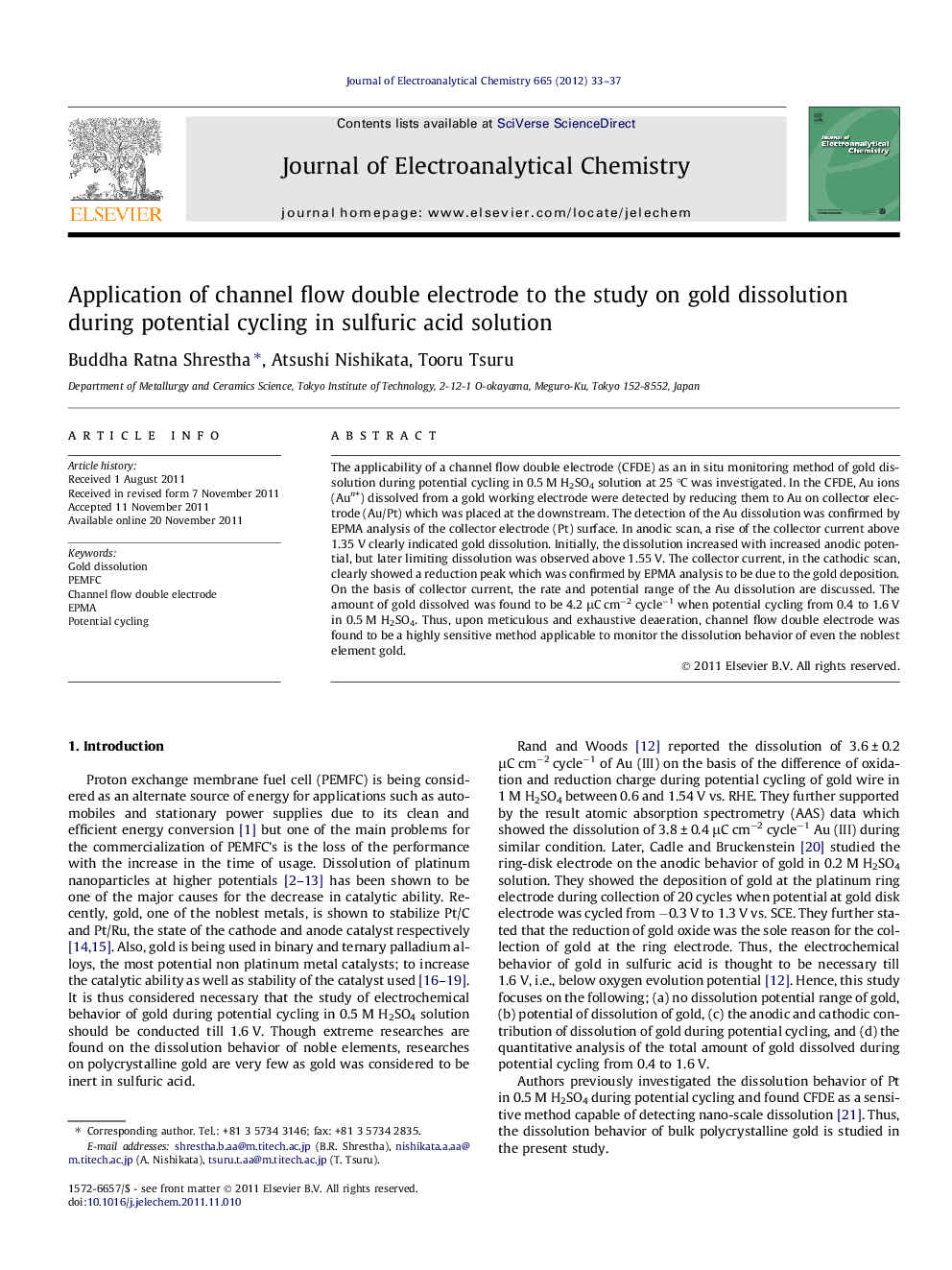| Article ID | Journal | Published Year | Pages | File Type |
|---|---|---|---|---|
| 219504 | Journal of Electroanalytical Chemistry | 2012 | 5 Pages |
The applicability of a channel flow double electrode (CFDE) as an in situ monitoring method of gold dissolution during potential cycling in 0.5 M H2SO4 solution at 25 °C was investigated. In the CFDE, Au ions (Aun+) dissolved from a gold working electrode were detected by reducing them to Au on collector electrode (Au/Pt) which was placed at the downstream. The detection of the Au dissolution was confirmed by EPMA analysis of the collector electrode (Pt) surface. In anodic scan, a rise of the collector current above 1.35 V clearly indicated gold dissolution. Initially, the dissolution increased with increased anodic potential, but later limiting dissolution was observed above 1.55 V. The collector current, in the cathodic scan, clearly showed a reduction peak which was confirmed by EPMA analysis to be due to the gold deposition. On the basis of collector current, the rate and potential range of the Au dissolution are discussed. The amount of gold dissolved was found to be 4.2 μC cm−2 cycle−1 when potential cycling from 0.4 to 1.6 V in 0.5 M H2SO4. Thus, upon meticulous and exhaustive deaeration, channel flow double electrode was found to be a highly sensitive method applicable to monitor the dissolution behavior of even the noblest element gold.
► Collector current can be used in monitoring nano-scale dissolution of gold during potential cycling till 1.6 V. ► Gold dissolution was not found to occur till 1.35 V. ► The rate of dissolution was found to increase with the increase in anodic potential. ► Gold ion was found to be produced with the reduction of gold oxide. ► The amount of gold dissolved was found to be 4.2 μC cm−2 cycle−1 during potential cycling from 0.4 to 1.6 V.
